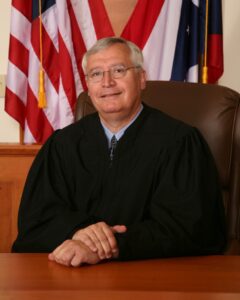 The Supreme Court of Ohio is scheduled on April 7, 2017 to hear arguments in the case of Dennis Stewart, Individually, and as the Administrator of the Estate of Michelle Stewart, Deceased v. Rodney E. Vivian, M.D., et al., 2016-1013. The issue before the court is whether Ohio Revised Code 2317.43, known as The Apology Statute, makes statements of fault or liability made by medical providers while apologizing or commiserating with patients and their families also inadmissible at trial.
The Supreme Court of Ohio is scheduled on April 7, 2017 to hear arguments in the case of Dennis Stewart, Individually, and as the Administrator of the Estate of Michelle Stewart, Deceased v. Rodney E. Vivian, M.D., et al., 2016-1013. The issue before the court is whether Ohio Revised Code 2317.43, known as The Apology Statute, makes statements of fault or liability made by medical providers while apologizing or commiserating with patients and their families also inadmissible at trial.
The Ohio Apology Statute, O.R.C. 2317.43, was enacted in 2004 with the intention to improve relationships between providers and patients in the case of errors by allowing medical providers to commiserate with patients and their families with the protection that their words would not later be used in a legal action against them. O.R.C. 2317.43(A) reads:
In any civil action brought by an alleged victim of an unanticipated outcome of medical care or in any arbitration proceeding related to such a civil action, any and all statements, affirmations, gestures, or conduct expressing apology, sympathy, commiseration, condolence, compassion, or a general sense of benevolence that are made by a health care provider or an employee of a health care provider to the alleged victim, a relative of the alleged victim, or a representative of the alleged victim, and that relate to the discomfort, pain, suffering, injury, or death of the alleged victim as the result of the unanticipated outcome of medical care are inadmissible as evidence of an admission of liability or as evidence of an admission against interest.
The question before The Supreme Court in Stewart is whether or not statements made by a provider expressing fault or liability while also expressing “…apology, sympathy, commiseration, condolence, compassion, or a general sense of benevolence…” are also to be excluded as evidence.
At issue in the underlying case, is whether statements made by the defendant doctor to the plaintiff’s family in the ICU are admissible. The plaintiff alleged that the doctor’s statements were admissions of fault, while the doctor argued it was his intention to apologize about what happened. The doctor filed a motion in limine to exclude testimony concerning this conversation from the trial. The trial court determined that the doctor’s statements were an attempt at commiseration with the family, however ineffective, and that a statement of fault can be included in an apology.
On appeal, the Twelfth District reviewed a 2011 decision of the Ninth District Court of Appeals in the case of Davis v. Wooster Orthopaedics & Sports Medicine, Inc., et al. In that matter, Leroy Davis, husband of Barbara Davis, deceased, sued Dr. Michael S. Knapic and Wooster Orthopaedics & Sports Medicine, Inc. after Dr. Knapic completely severed Mrs. Davis’s left common iliac artery and lacerated her iliac vein during a lumbar microdiscectomy. Mr. Davis and his daughter both testified at trial that Dr. Knapic told them he had nicked an artery during the surgery and that he took responsibility for it. After the jury awarded Mr. Davis $3 million in damages, Dr. Knapic appealed on the grounds that the trial court admitted apology evidence in violation of R.C. 2317.43. Mr. Davis argued that the court did not admit apology evidence, as R.C. 2317.43 does not prohibit the use of statements of fault, responsibility, or liability. Dr. Knapic argued, however, that a distinction could not be drawn between an expression of sympathy and an acknowledgement of fault because doing so would violate the intent of the statute; the word “apology”, he argued, includes an expression of fault. Mr. Davis argued that the words of the statute did not intend to exclude a direct admission of fault and responsibility.
In the Davis decision, the Ninth District Court of Appeals recognized that the word “apology” could include “an implication of guilt or fault”, but also noted that upon hearing that someone has died, it is common to say, “I’m sorry” without the assumption of being at fault in the person’s death. The court, therefore, determined that the word created ambiguity. In the end, the court opined that when reading the word “apology” in the context of the other words of the statute, “…sympathy, commiseration, condolence, compassion, or a general sense of benevolence…”, that do not express a sense of fault, they believed the statute “…was intended to protect apologies devoid of any acknowledgement of fault.” The appellate court, therefore, ruled that the trial court had correctly admitted the testimony of Mr. Davis and his daughter.
The Twelfth District agreed with the Davis decision in that the word “apology” creates ambiguity in the statute. They disagreed with the Davis court, however, on the intention of the statute. The Twelfth District determined that the statute was enacted to provide medical providers the ability to apologize to and to console patients and families without the fear of legal action. The Stewart court opined that the intent of the statute was to exclude all statements of apology, including those of fault, because a common usage of “apology” is to admit a wrong while expressing regret. The court further noted that since the statute provides that “any and all” statements expressing apology are to be inadmissible, it can be resolved that the intention was to exclude statements of fault as well.
The Ohio Supreme Court’s decision should help clarify the ambiguity in the statute and resolve the conflict that exists amongst the district courts. It will be interesting to see how the Court interprets the statute in light of evidentiary rules that allow admissions of fault to be to be introduced at trial.





